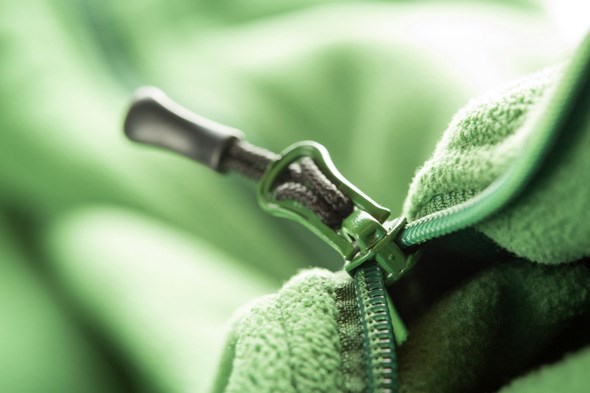Did you know that fleece clothing is made out of recycled polyethylene terephthalate — or PET? That’s the fancy word for the material most plastic bottles are made out of, and it’s just one of many products that are produced wayyyy down the line after we recycle stuff in our blue bins at home. But how does a plastic bottle go from your recycling to becoming a cozy new fleece jacket?

After your recycling is collected, it’s sorted with similar materials and compacted into bales. It’s important that bales consist of only
the same material to optimize their recyclability. Bales are then sold to material remanufacturers who process the contents into something that can be used again. For example, bales of PET are shredded, washed, and then they get get turned into pellets. These pellets are heated and spun into fibres which are then processed into fleece clothing and other new products. Fewer new resources are required in the manufacturing process when you start out with recycled materials as your base.
There are a ton of different end-uses for plastic containers, which all depend on the type of plastic. Milk jugs – high-density polyethylene — are used in new packaging for shampoo or detergent bottles. Plastic bags — polyethylene — are used in plastic decking. Margarine tubs —polypropylene — are used to make storage bins. Each of these plastic types — or resins — follow a similar process of being shredded, washed and pelletized before they can be turning into new products.
Metal cans continue on to become new products or new cans. In fact, anything made from steel in North America has some recycled content, and recycling metal uses less energy than producing new metal. That means your empty can of peaches could re-enter your home when you replace your fridge or even your toaster. Like plastics, when being recycled metals need to be sorted into different types. Once sorted, the metal packaging is shredded and smelted. It can then be rolled into sheets, wire, or bar, and used to make new cans, car parts, or construction materials.
Paper is pulped and pressed into fibres that become cereal boxes, egg cartons, and cardboard boxes depending on the mix of papers.
Recycling residential packaging and printed paper in British Columbia is made possible by Multi-Material BC (MMBC), a non-profit organization that collects fees from the retailers, manufacturers, and other companies that sell or provide packaging and printed paper to residents. MMBC manages the recycling and collection of the packaging and printed paper on behalf of these companies removing the financial burden from municipalities. This is called extended producer responsibility, or EPR. There are over 20 EPR programs in BC, for materials such as tires, batteries, lights, electronics, and more, each of which provides BC residents with management options and avoid disposal, filling up landfills. Help give your packaging and printed paper a second life by recycling it!
For more about what happens to your recycling, visit .


